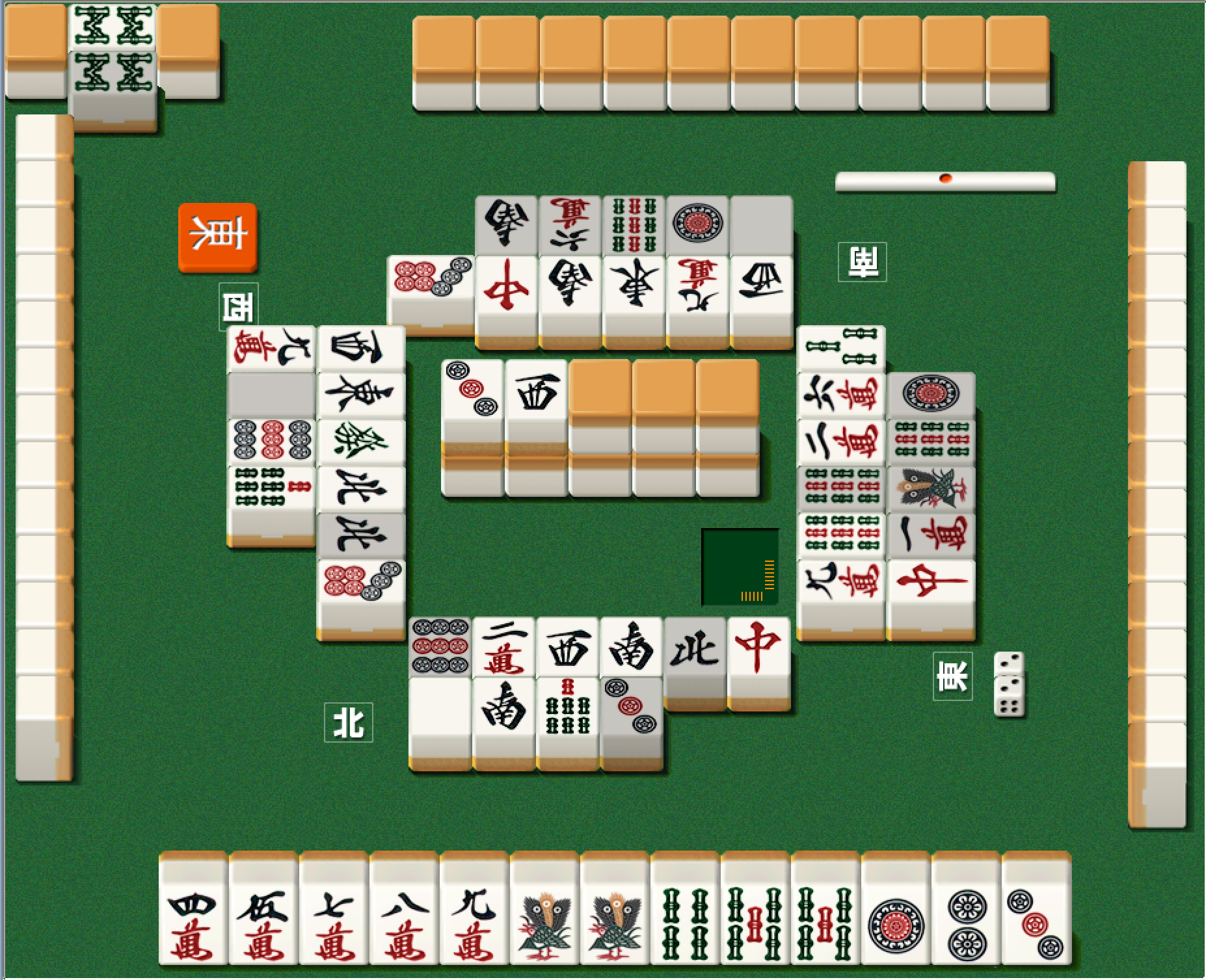Ura Suji AND Matagi Suji
All of these suji theories are fairly useless and easy to debunk when alone. But like power rangers, when they combine their power, they can be mighty.
This is a fairly standard hand in terms of its progression.
Ron2 marks tiles that are discard straight after a draw in gray. The progression is fairly standard, and everything about it suggests a regular pinfu hand, maybe tanyao in a good situation.
The honor tiles you can not consider as particularly relevant information now that we’ve established the progress is regular and it’s likely to be a regular hand shape. THIS is the time to start applying your ura and matagi suji.
Remember:
1) Ura-suji are relevant earlier (you’re cutting waste from a shape like 245)
2) Matagi-suji are relevant later (you’re pruning a more ideal shape such as 455 as you get into tempai)
Second tile discard (二) may be information. It is early so ura suji may apply. That would make 三 & 六 dangerous. This is just something to note. It’s not conclusive.
Nothing interesting then until the 7. We’ve entered mid-game discards and we’re close to teh riichi so this could be a matagi suji, discarding from a 677 or 778 shape. However, the 677 shape looks unlikely with the 5 discard.
The 5 being my last discard from my hand would make me wonder if this was a time to better apply ura suji. What sort of situation could I have built where I’d be holding onto a 5677 or 5778 shape and chose to throw a 7 AND then a 5.
(There’s an outlying possibility that I did dama with 567 and then decided to swap a 5 draw to put opponents off. That would be more realistic if the kan had prompted it. But the kan was early because people are cray)
Reading a matagi suji on the 5 is an easier call because we know the player gets into tempai at this point. Matagi suji on the 5 is 3 & 6 or 4 & 7.
7 is obviously safe and we’ll assume they’re not in furiten. Then let’s run back and think ura suji for the 7, meaning 3 & 6 are dangerous. We can imagine that the player had a 4557 shape. Pruned the 7 and then drew a tile to reach tempai.
Now we can’t know for sure whether that then means they are waiting on a 45, but it wouldn’t be worth the risk. We have identified that 3 & 6 are likely to be VERY dangerous.
However, do not forget that early 二 discard.
In some ways this demonstrates the information that is available to you when you use suji reads. But also I hope it hammers home that even if you have a lot of information, it could also be worthless in identifying safe tiles. That 二 read works here, but it could just have easily been some shrapnel I cut as I was working outside in to build my hand. I could just have easily had something like (6)(7) and there would be nothing there to indicate that was my wait. And this is exactly why many prominent players do not believe ura suji should be used ever.
In the end, the only truly safe tiles are the ones you can see on the board. Suji can give you some more likelihoods to what a player is doing (and ideally they cut out some possibilities with discards after the riichi) But any extra information you have on an opponent’s hand may give you the very slight edge you need at orasu to push yourself into top.




